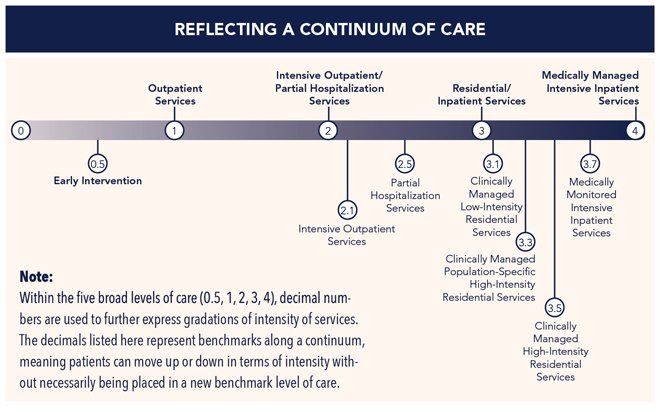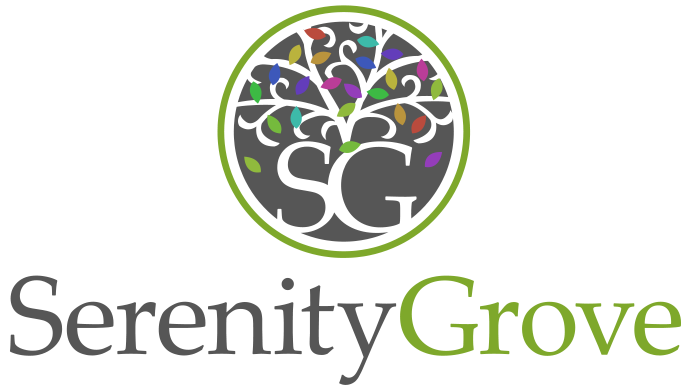
Substance abuse treatment is not a one-size-fits-all proposition and that is why a needs assessment is always the first step. Call today
706-389-5157 to schedule a NO COST evaluation to determine a personalized treatment plan so you can start on your path to
rediscovering life. During your discussion about options with a treatment professional you will hear terms: continuum of care, levels of
care, PHP, IOP, detox, withdrawal symptom management, and residential treatment. What does it all mean? It can get confusing and sound like a
different language.
Let’s break it down: The first thing to know is that treatment spans over a period of time and involves stages based on patient need.
According to drugabuse.gov, “Research indicates that most addicted individuals need at least 3 months in treatment to significantly reduce
or stop their drug use and that the best outcomes occur with longer durations of treatment. Recovery from drug addiction is a long-term
process and frequently requires multiple episodes of treatment. As with other chronic illnesses, relapses to drug abuse can occur and should
signal a need for treatment to be reinstated or adjusted. Because individuals often leave treatment prematurely, programs should include
strategies to engage and keep patients in treatment” (https://www.drugabuse.gov/publications/principles-drug-addiction-treatment-research-based-guide-third-edition/principles-effective-treatment). This approach to treatment is most often referred to as the continuum of
care and will include different levels of treatment. According to the American Society of Addiction Medicine (ASAM), there are five main
levels of treatment in the continuum of care for substance abuse treatment (https://www.asamcontinuum.org/knowledgebase/what-are-the-asam-levels-of-care/):
Level 0.5: Early interventions services
Level 1: Services for Outpatients
Level 2: Partial hospitalization / Intensive outpatient (This level can be broken down into 2.1 and 2.5)
Level 3: Residential / Inpatient Services. (This level can be subdivided into 3.1 , 3.3., 3.5, and 3.7)
Level 4: Is an intensive medically managed inpatient service
Level 4: Medically Managed Inpatient Services
For our purposes, let’s discuss level 4 first, which is the highest level of care and many times the point at which people access treatment. This level of care is commonly referred to as “detox” and includes medically managing withdrawal symptoms. At facilities like Serenity Grove in Athens, GA, there is included 24/7 nursing and monitoring, medical evaluation, one-on-one counseling, and group therapy. The outcome desired is stabilization and a comprehensive treatment plan that is personalized and may address co-occurring issues.
Level 3: Residential/Inpatient Services
Level 3 of the continuum of care provides residential treatment and is often a step down after detox and stabilization. According to ASAM
it can include different levels of intensity. This stage of treatment is for patients who although stable, need continued inpatient help with
their recovery before being appropriate for an outpatient treatment setting. It provides a structured environment that focuses on teaching
recovery skills, relapse prevention techniques, social reintegration, and ongoing case management for vocational, housing, and transportation
needs.
Level 2: Intensive Outpatient/Partial Hospitalization Services
The next level of treatment is in an outpatient setting, although many treatment centers including Serenity Grove offer a residential component. Patients can directly admit to these services, but many times come from an inpatient setting. Partial Hospitalization Programs (PHP) typically are five days a week with 5-6 hours per day of group therapy that includes ongoing recovery education, psychotherapy, and case management. Intensive Outpatient Programs (IOP) are similar in content to a PHP but typically are three or five days a week with 3 hours of programming.
Level 1: Outpatient Services
At the general outpatient level of care, a patient attends regular scheduled meetings with an individual therapist. At this level of care a patient can retain a routine of work or school and family life while being supported in their recovery journey through treatment and follow-up services. Level 1 is also a stepping stone for people who are not ready or willing to commit to a complete recovery program.
Of course, there is a lot more that goes into each level of care and the decision clinically about which approach will be most beneficial to the
patient. Addiction treatment is comprehensive and often complicated by many other factors in the specific circumstances faced by an individual. Serenity Grove treats the whole person and not just the addiction because we realize substance use disorder affects every aspect of life. Our treatment philosophy is holistic in it’s approach because the addictive behavior is not purely a physical, mental, or an emotional
problem; therefore, treatment must address the root causes in order to increase likelihood of long-term recovery. Call right now 706-389-5157
to schedule a NO COST level-of-care assessment. Phones are answered 24/7 by treatment professionals trained in treatment options, financial
strategies, and insurance questions.

